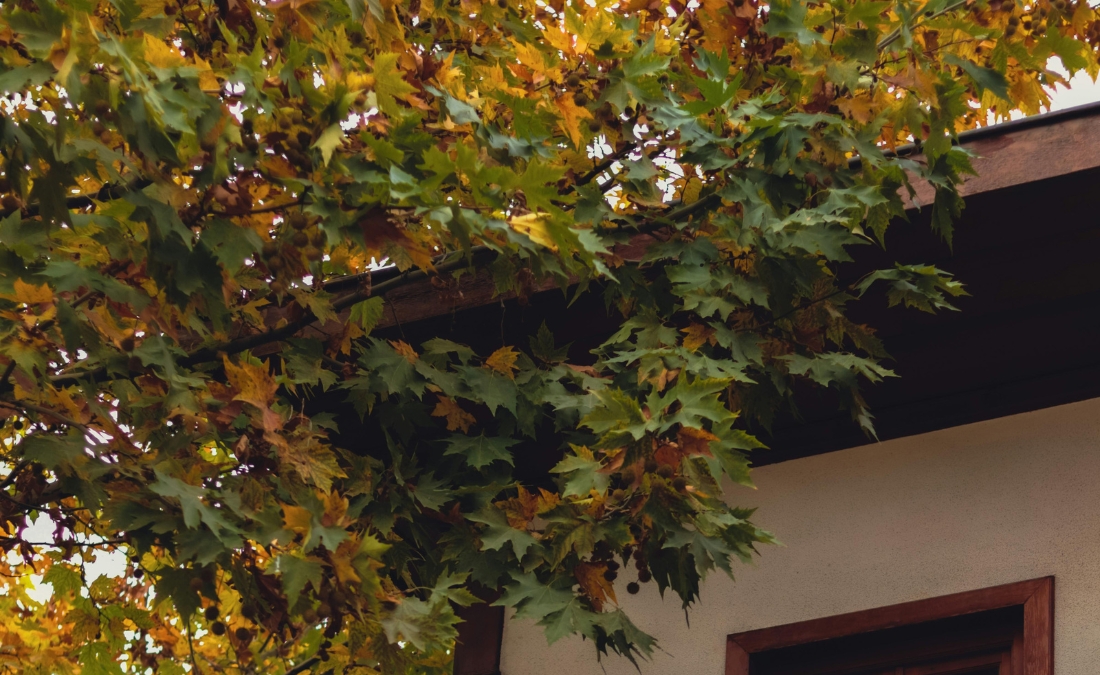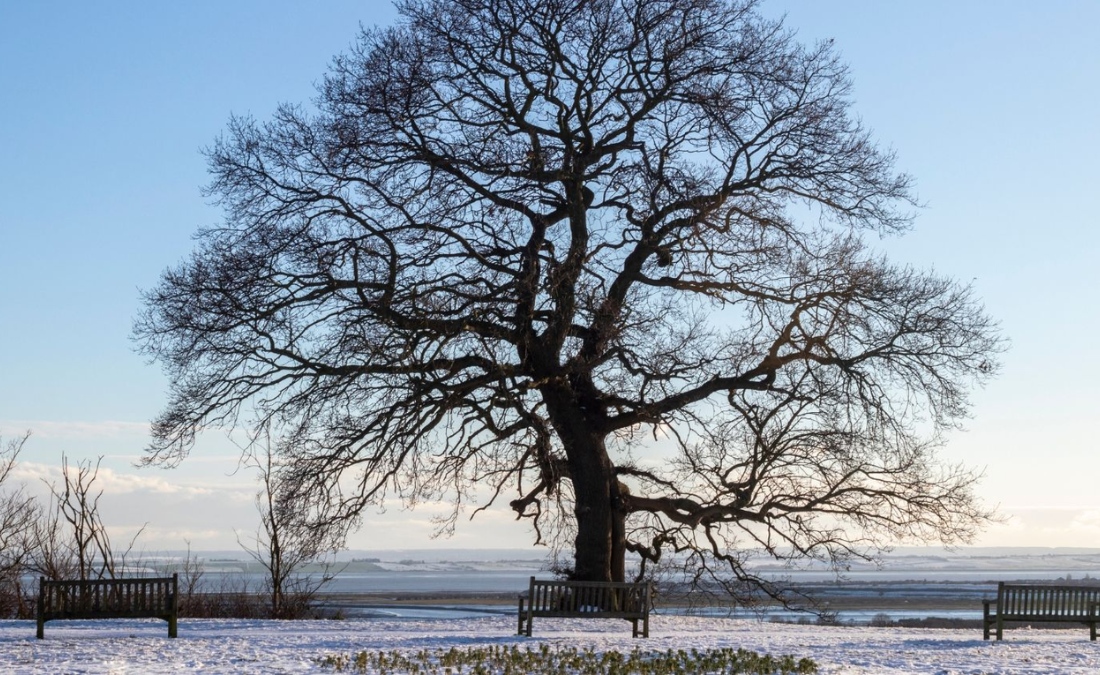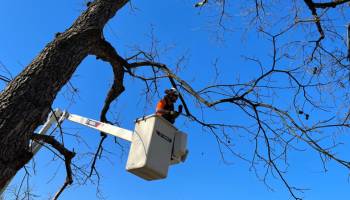4 Common Kansas City Tree Pests Homeowners Need to Watch For
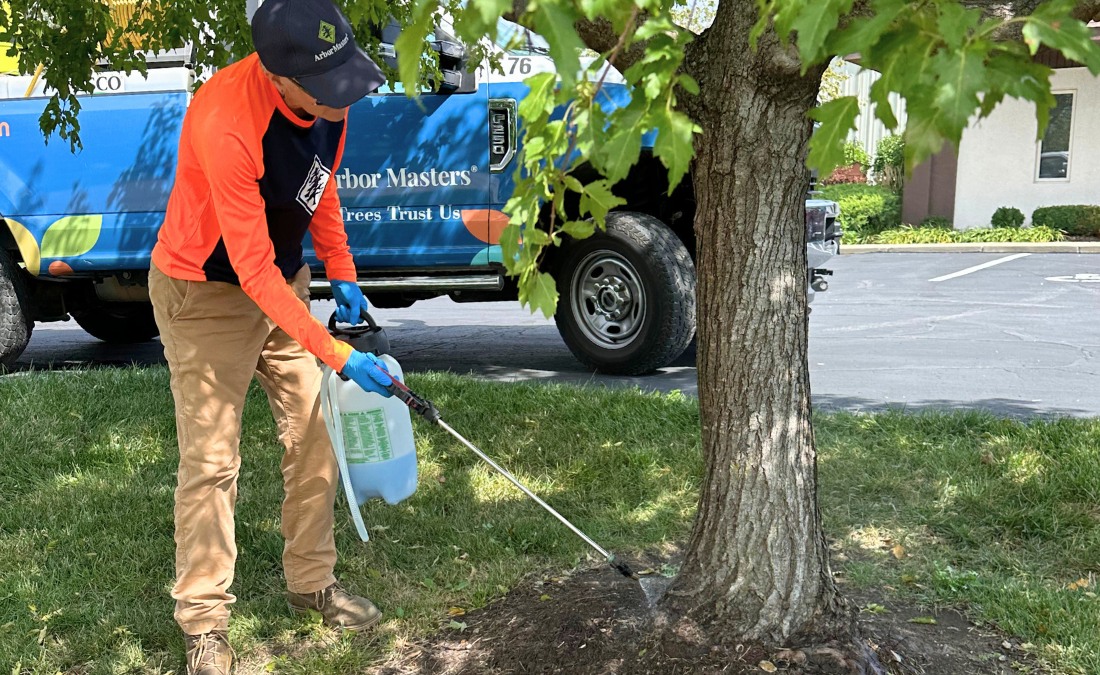
Worried about tree Kansas City tree pests? Learn how to spot 4 common threats before they stress or kill your trees – and what you can do to stop them.
Tree-killing pests are becoming an all-too-common problem in Kansas City – and it’s costing homeowners thousands. Insect infestations are now one of the top reasons for tree removals in our area, stripping neighborhoods of valuable shade, property value, and ecological health.
While not every tree can be saved, knowing what to look for can make a huge difference. Here are four of the most common Kansas City tree pests and what you can do to protect your property.
Key Takeaways
- The emerald ash borer quickly kills Kansas City ash trees, requiring preventive treatments, as damage is irreversible once detected.
- Elm bark beetles spread deadly Dutch elm disease through a fungus they carry, making professional treatments essential for protecting elm trees.
- Japanese beetles skeletonize leaves during summer months, and homeowners can control light infestations by hand-picking beetles in the early morning.
- Oak mites cause itchy skin bumps on humans when they fall from oak trees during late summer and early fall.
- Healthy, unstressed trees resist pests more effectively through proper mulching, watering, winter pruning, and targeted fertilization.
4 Common Kansas City Tree Pests to Watch Out For
Tree pests are a significant problem for Kansas City homeowners and can quickly kill your trees without any intervention. Four common Kansas City tree pests you need to watch out for in our area include:
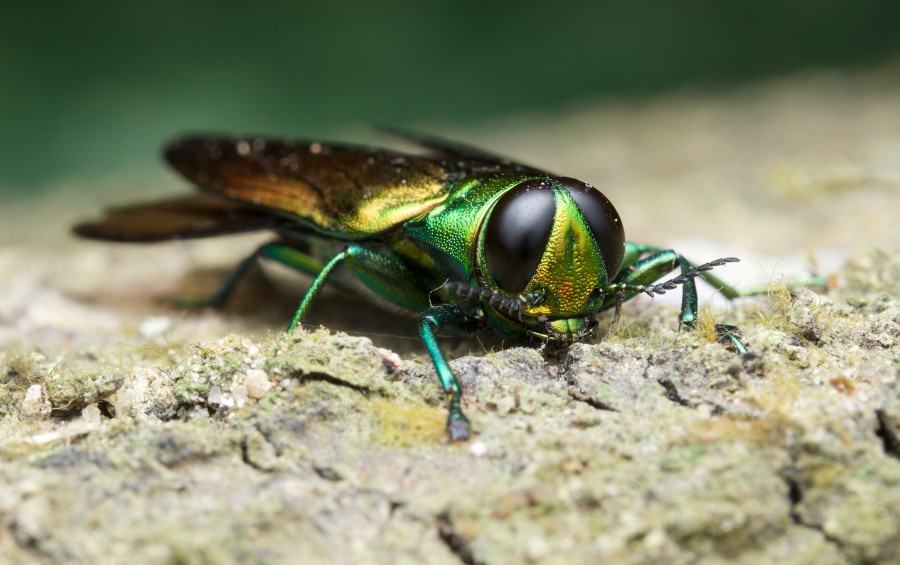
1. Emerald Ash Borer
Emerald ash borer (EAB) is a tree pest you might have heard of, as it has killed countless ash trees across Missouri and the rest of the country.
These wood-boring beetles dig under the bark of an ash to lay their eggs. The larvae that hatch will quickly begin to eat the inner wood. As they continue to eat the inner wood, it will eventually girdle the tree (leaving it unable to transport water and nutrients throughout the trunk), killing the tree within a few years.
EAB causes damage that is not typically reversible. Even if you treat the tree after confirming the presence of EAB, it may still not be able to survive if the pest has done enough damage. Your only option will be to remove the tree, which is a risky endeavor, considering its brittle branches and poor structural integrity.
But how can you tell if your tree has an infestation of EAB? Typical signs of an EAB infestation include:
- Appearance of adults around your tree
- Declining and thinning canopy
- Increased woodpecker activity
- D-shaped exit holes in the trunk
- “Galleries” under the bark
Preventive insecticide treatments can stop EAB from establishing in your tree. You will have to have a professional regularly treat your trees to keep them protected from EAB.
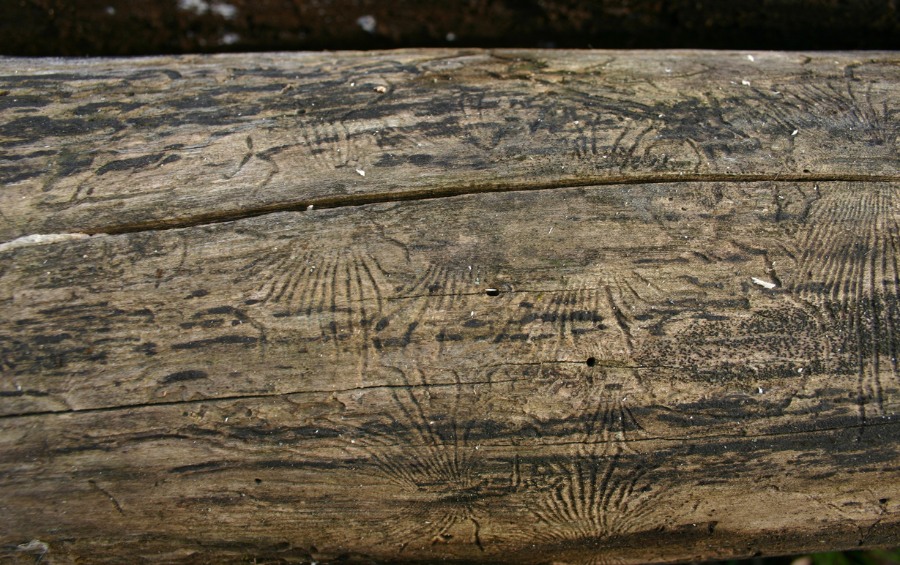
The trademark galleries left by elm bark beetles. Photo courtesy of User:SB_Johnny, CC BY-SA 3.0, via Wikimedia Commons
2. Elm Bark Beetle
The native elm bark beetle (Hylurgopinus rufipes) is a common pest for elms in Kansas City. They typically attempt to colonize dead or dying elm trees, and some have even laid eggs in elm firewood. Like EAB, they bore into the bark of the tree to lay its eggs.
So, what makes these beetles different from EAB? Well, for starters, the damage you have to worry about isn’t necessarily from the elm bark beetle itself. Rather, the fungus they carry, called Ophiostoma ulmi, that causes Dutch elm disease. The beetles act as unintentional carriers, introducing the fungus as they burrow into tree bark to lay their eggs.
Preventive insecticide treatments can help protect healthy elms from colonization. Just as important is maintaining overall tree health to strengthen its natural defenses against both pests and disease.
PRO TIP: Aside from the elm bark beetle, the other common vector for Dutch elm disease is the smaller European elm bark beetle. If you have at-risk elms on your property, have an arborist inspect your trees and come up with a treatment plan to protect them.
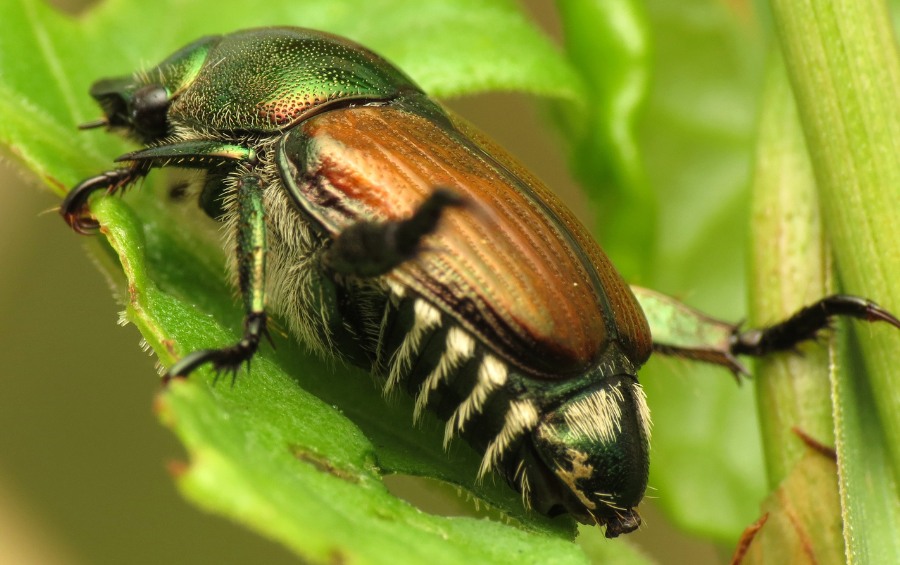
Photo courtesy of Katja Schulz from Washington, D. C., USA, CC BY 2.0, via Wikimedia Commons
3. Japanese Beetle
Japanese beetles (Popillia japonica) are an invasive and destructive pest that harms many different species of trees in Kansas City. They eat the leaves of everything from rose bushes to crape myrtles and maples.
Adult females lay 40-60 eggs underground, where they feed on plant roots and develop for about a year. They emerge in the early summer (around mid-June) and head out in search of food and a mate. The beetles feed on the leaves of trees and can quickly leave them looking like a skeleton.
Controlling Japanese beetles is difficult. The most effective method of controlling them is to hand-pick the beetles from the leaves and drop them into a bucket of soapy water. Beetles are more sluggish in the morning and easier to capture.
It is best to use this method when the infestation is light, as it can be very time-consuming to hand-pick beetles when their numbers increase significantly.
While some insecticides can help control Japanese beetle populations, they will also potentially harm pollinators. This is especially true when you apply them to plants that attract pollinators, such as roses. We recommend talking with an arborist before trying any insecticides to ensure you don’t harm bees and other pollinators.
PRO TIP: Want to learn more about how the Arbor Masters team is trying to protect bees and pollinators in our area? Check out our recent article on how we’re helping save honeybees.

Oak mites can drop from oak leaves onto you, causing itching and discomfort.
4. Oak Mites
Oak leaf itch mites (Pyemotes herfsi) are somewhat unique as tree pests in that they mostly are a nuisance to humans rather than trees. These pests bite humans and cause itchy bumps on the skin.
“Oak mites were first identified in the U.S. right here in Kansas, and they’ve been a recurring issue across the Midwest since 2004. Because they drop from oak tree canopies, people often notice bites on their head, neck, and arms. While they don’t harm trees, they can be a nuisance to anyone spending time outdoors.” – Alex Lathrop, Arbor Advisor at Arbor Masters
The mites live in galls on an oak tree and quickly reproduce, and they seem to be most common in pin oaks. As we are still learning about this pest, we have not yet developed a comprehensive understanding of control methods for it.
We recommend avoiding spending too much time under oaks during the late summer and early fall to protect yourself from oak mites.
General Tips to Keep Your Trees Free of Pests This Year
While every tree pest we face in Kansas City has unique control and prevention methods, there are some universal truths about pest control. The most important part is keeping your trees healthy and stress-free so they can resist pest attacks more effectively.
Some of the ways you can lower tree stress include:
- Use a two to four-inch layer of mulch around your tree to regulate soil temperature and add nutrients to the soil.
- Water during a drought to reduce summer heat stress.
- Save significant pruning for the winter (between December and February) when trees are dormant.
- Provide fall fertilization when a soil sample shows a nutrient deficiency.
Frequently Asked Questions About Tree Pests in Kansas City
We understand that tree pests aren’t something many homeowners are familiar with. To help you better understand the damage they pose to your trees, we’ve answered some common questions from homeowners about them and how to protect their trees.
Are all bugs bad for my trees?
No, not all insects are harmful to your trees. In fact, many beneficial insects can help control pest populations. Some of those include parasitic wasps and lady beetles. You can encourage these beneficial bugs to appear on your property by having a varied range of species of trees and flowers.
When is the best time to do preventive treatments for Kansas City tree pests?
The timing for treating your trees will depend on the species and the weather conditions we’ve been experiencing. Some trees will need spring preventive treatment (like for EAB), while others are better in the early summer. Talk with an arborist and ask them when it is best to treat your trees.
Why can’t you just use insecticides for all tree pests?
While insecticides are a vital part of pest management, they are something we use sparingly. Overusing insecticides can harm beneficial insects or pollinators. For this reason, we use insecticides in conjunction with more natural methods to protect your property while still controlling pest populations.
Professional arborists can also target specific pests with systemic treatments that minimize impact on beneficial insects, unlike broad-spectrum applications.
Concerned About Tree Pests? Let Arbor Masters Protect What Matters
If you’ve spotted unusual leaf damage, early leaf drop, or other common symptoms of tree pests, your trees could be under attack. Left untreated, these infestations can quickly weaken or kill even mature trees. When you want to give your trees the best chance to survive an infestation, trust the experienced team at Arbor Masters.
Our team can examine your trees, identify any issues, and develop a treatment plan to help keep them healthy and standing for years to come. And if your tree is too far gone, we can
safely remove it to protect your property. Call us today at 816-524-3131 or request a quote online for pest management.
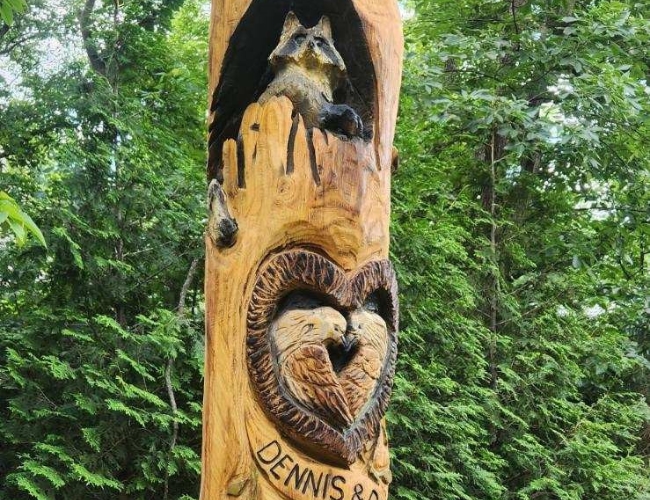
Get the latest local news, tree care tips, special offers, and company updates directly to your inbox! It's easy to subscribe and there's no spam - we promise.
"*" indicates required fields


